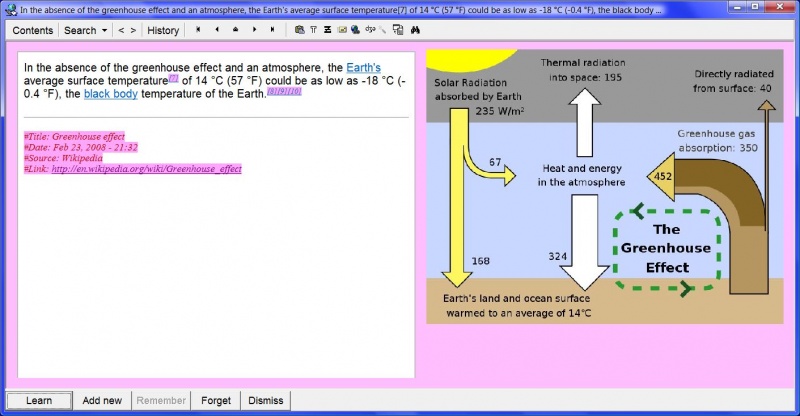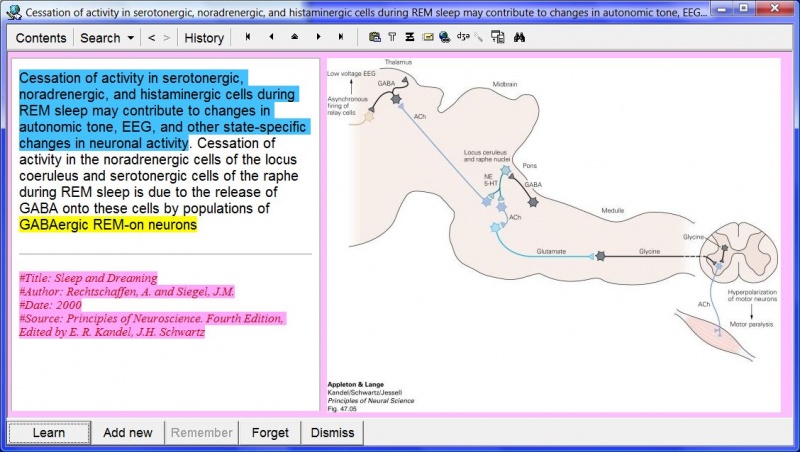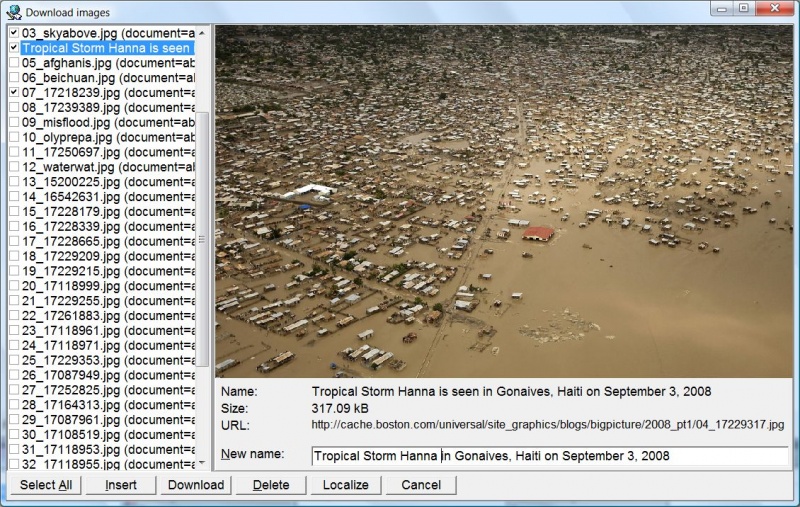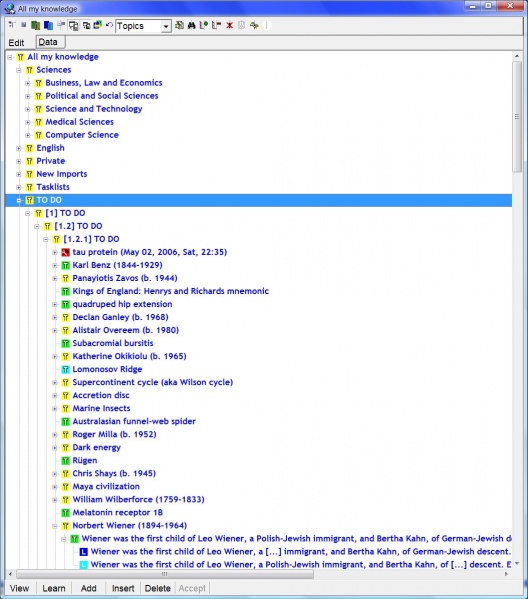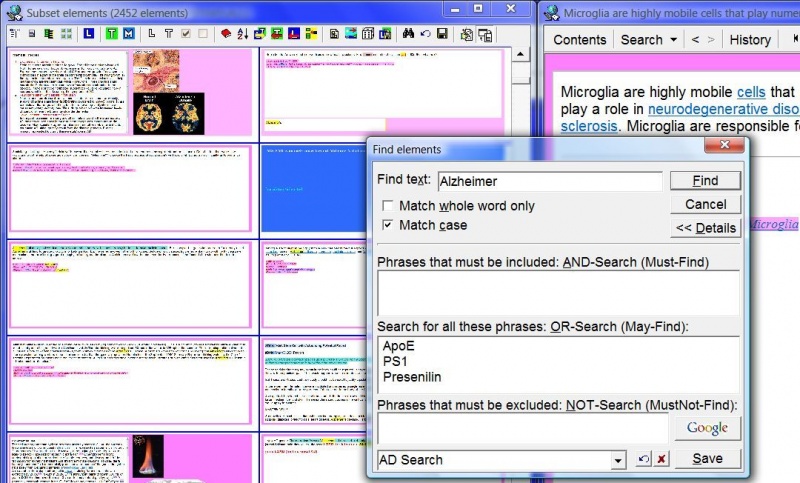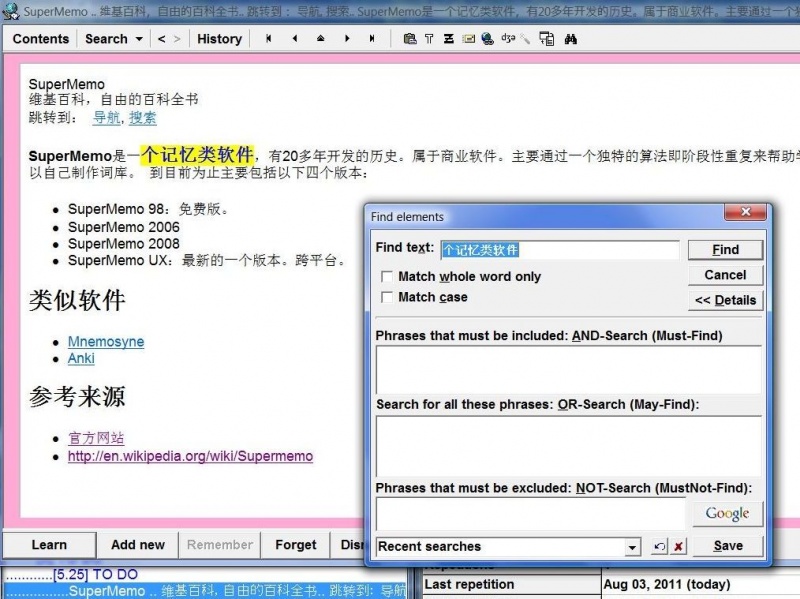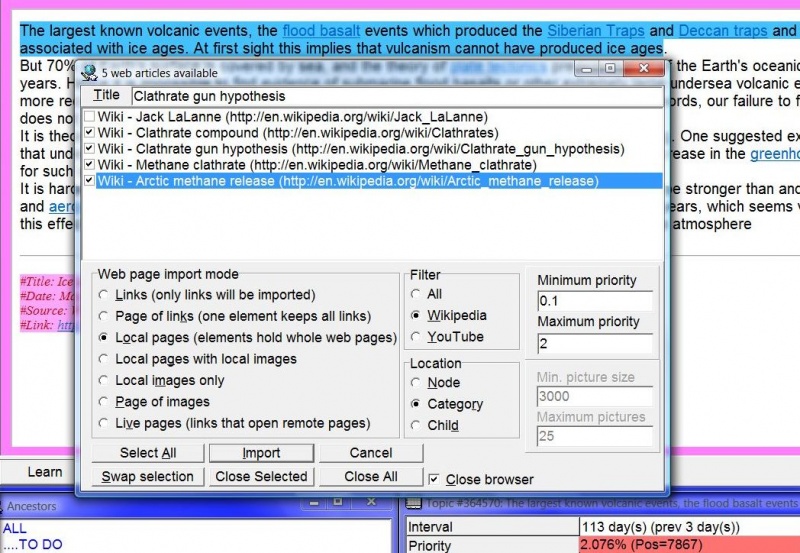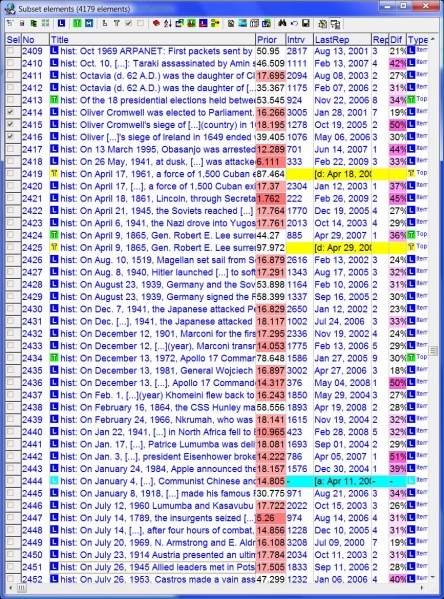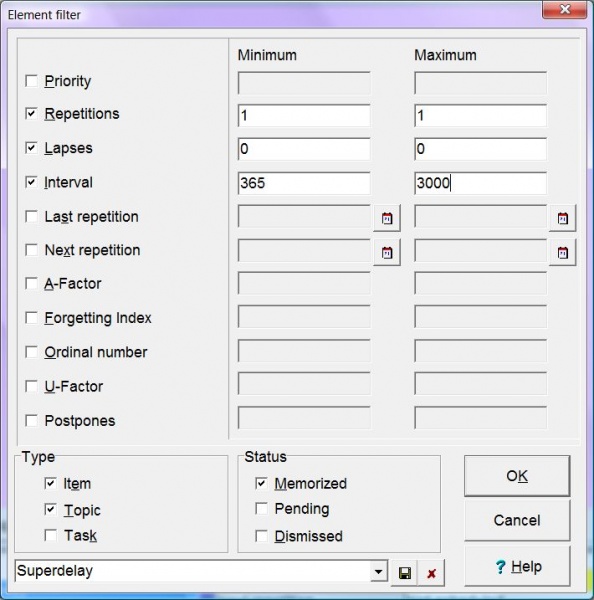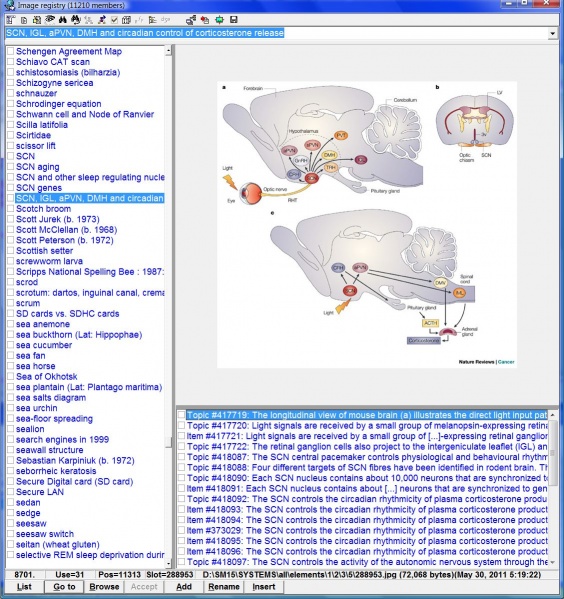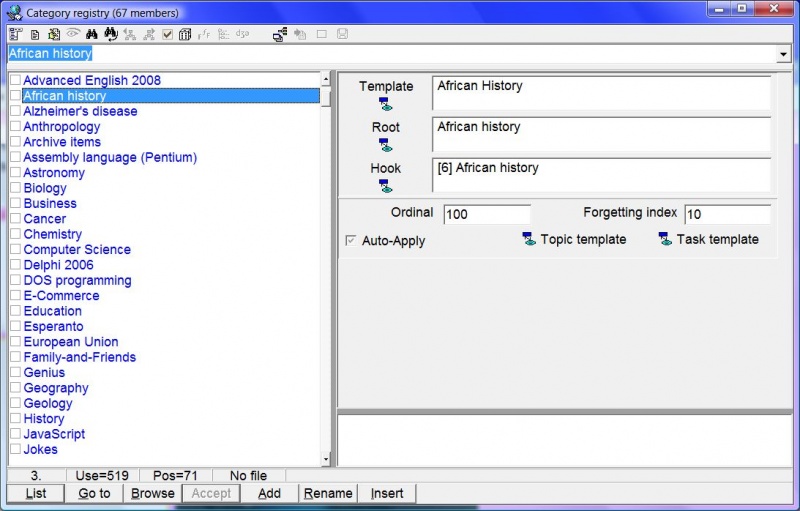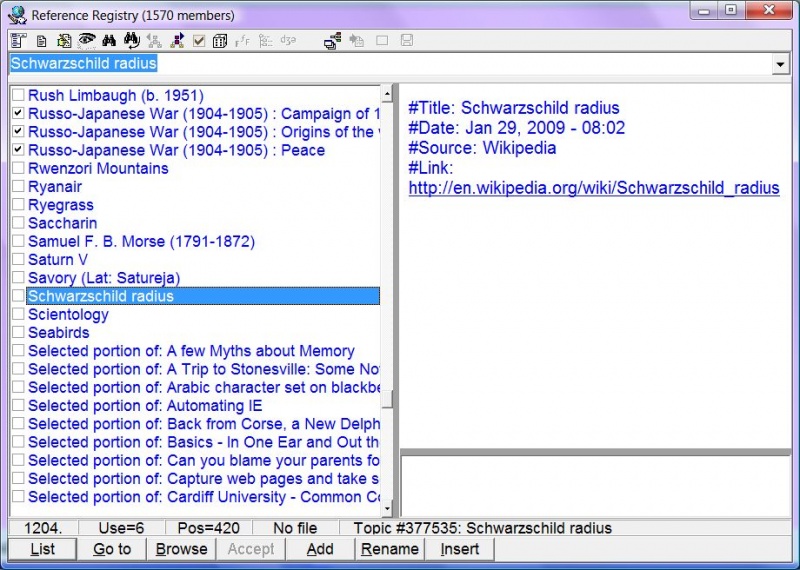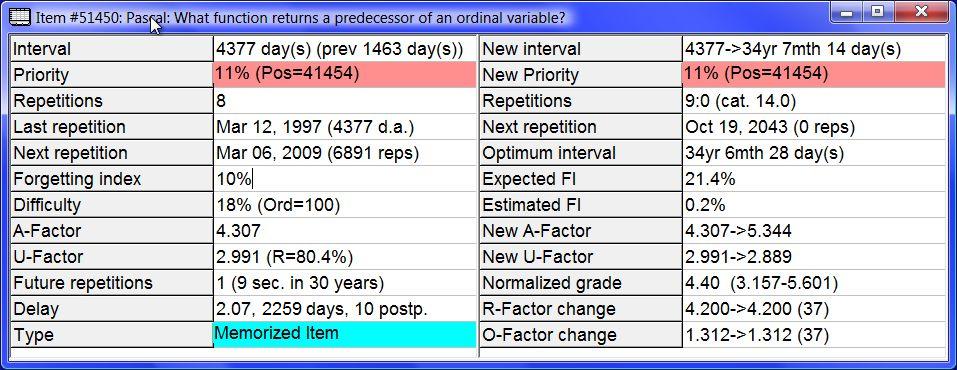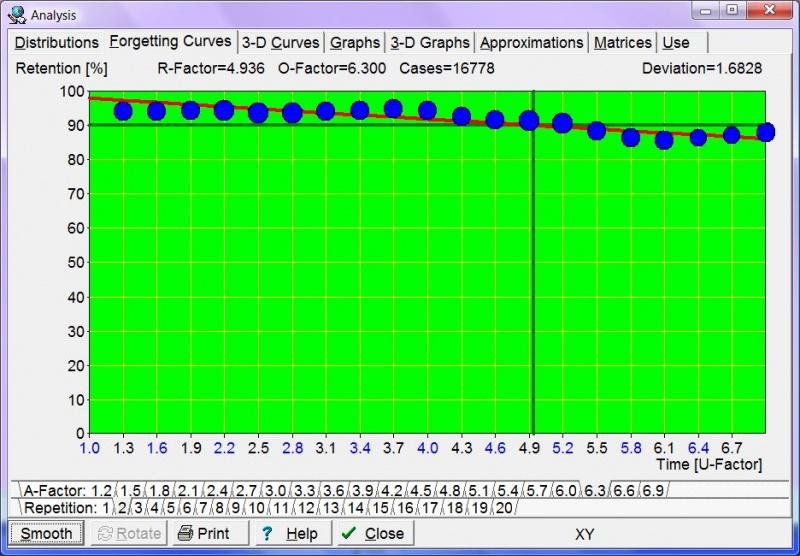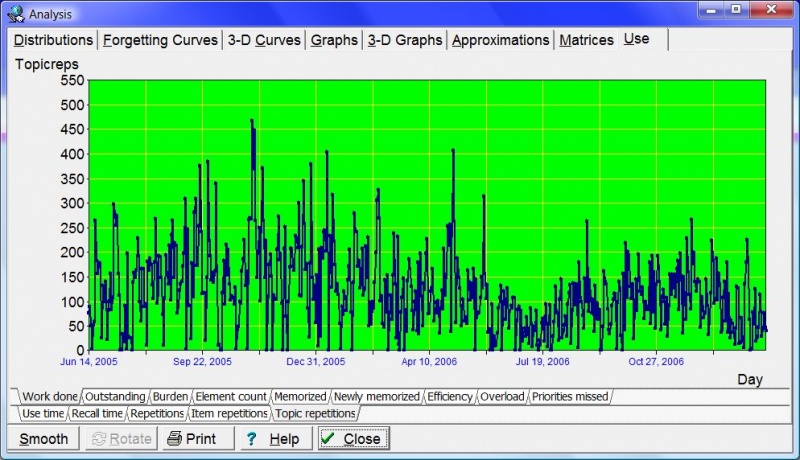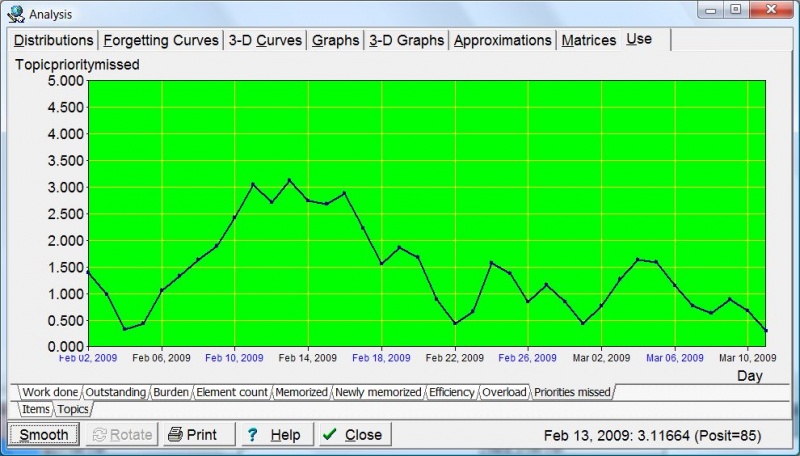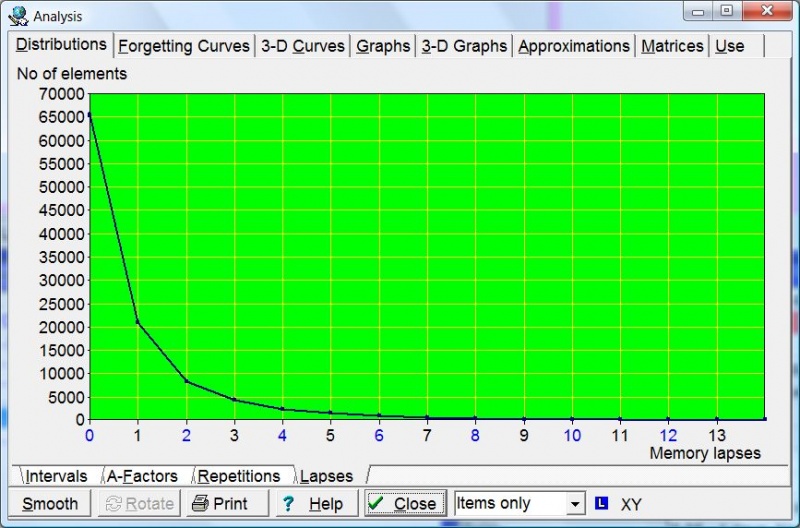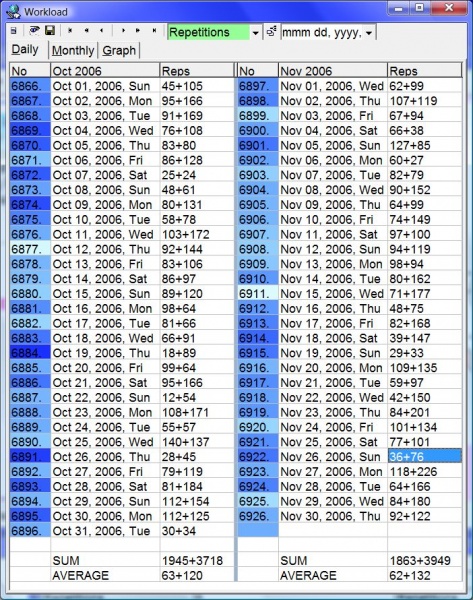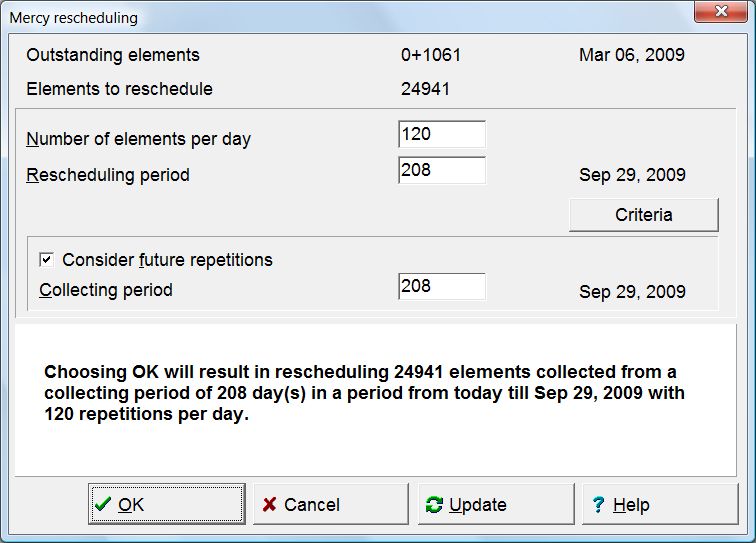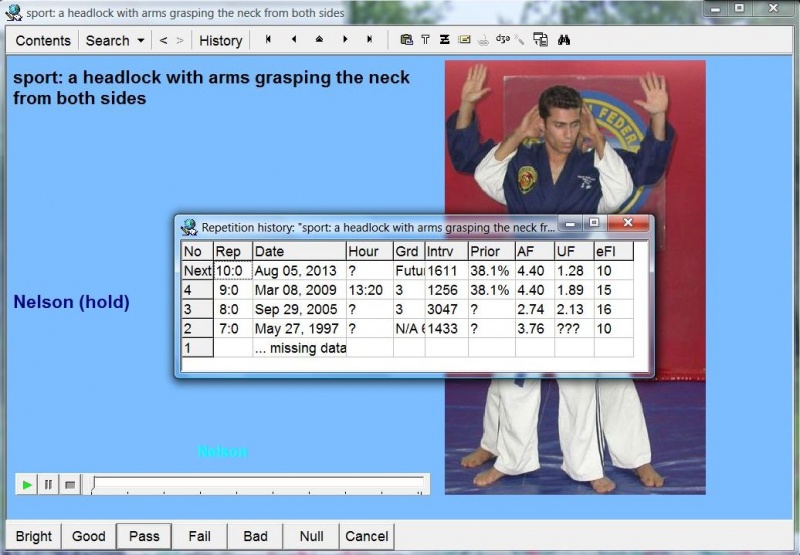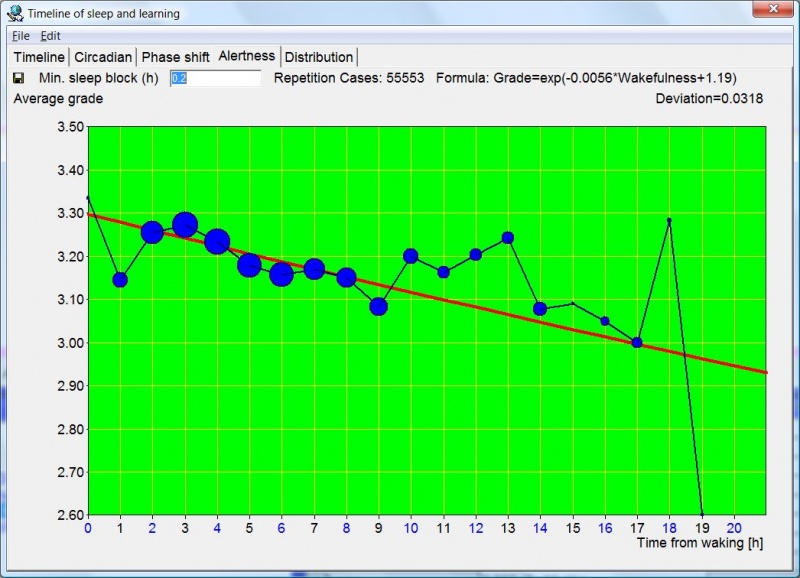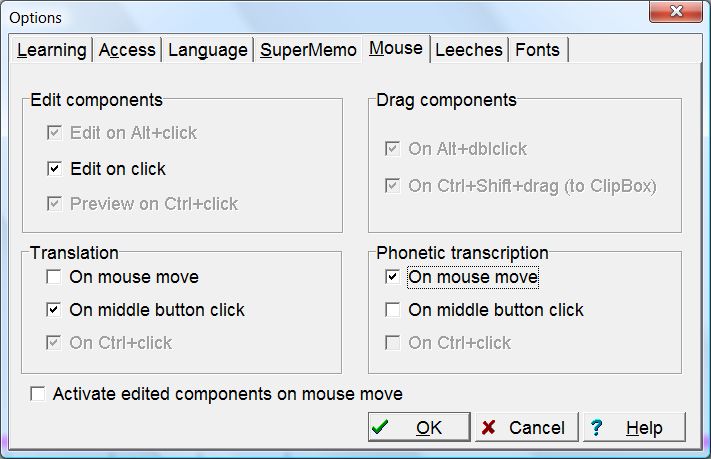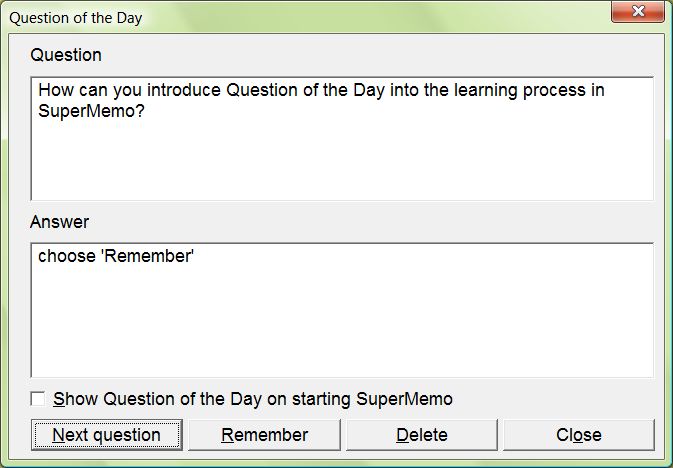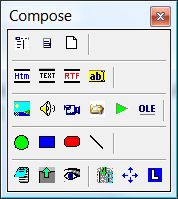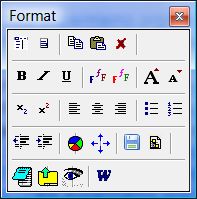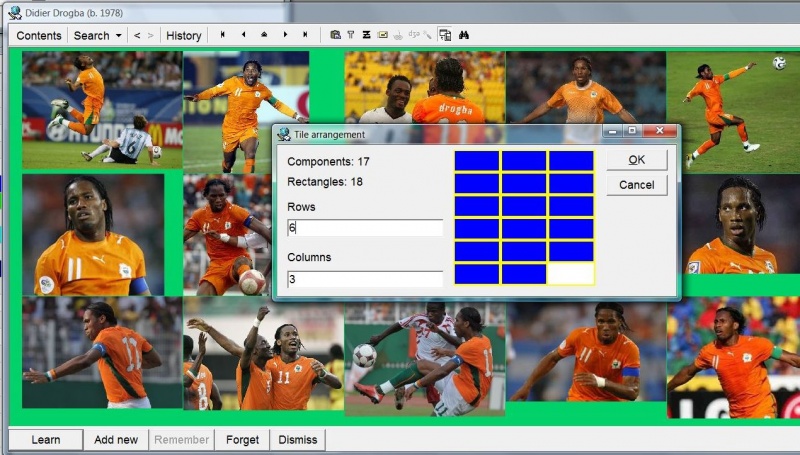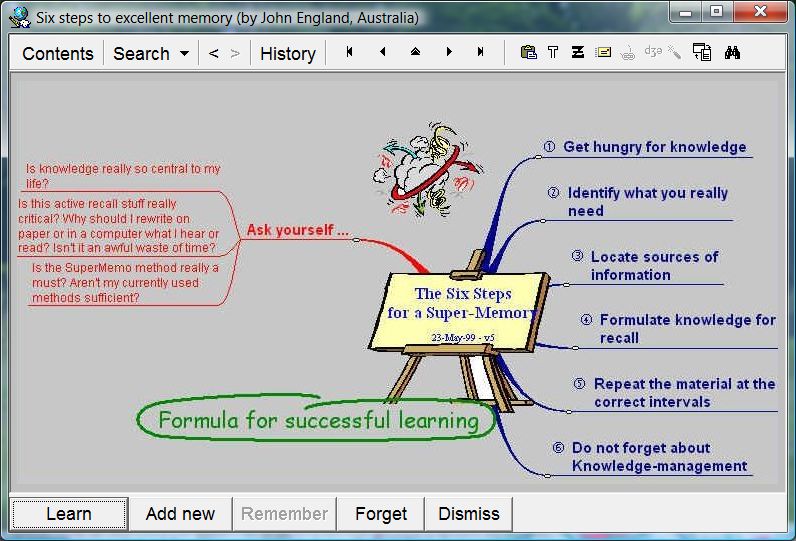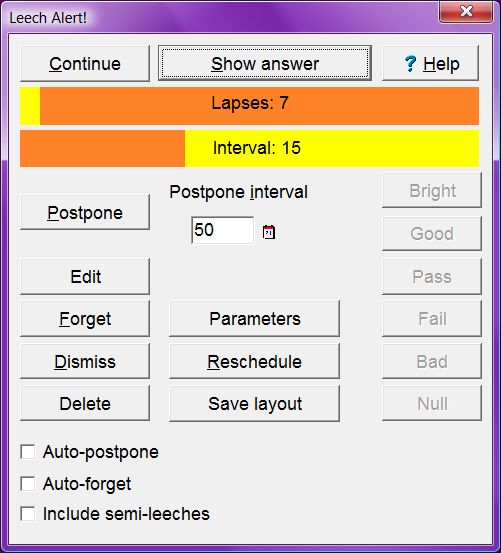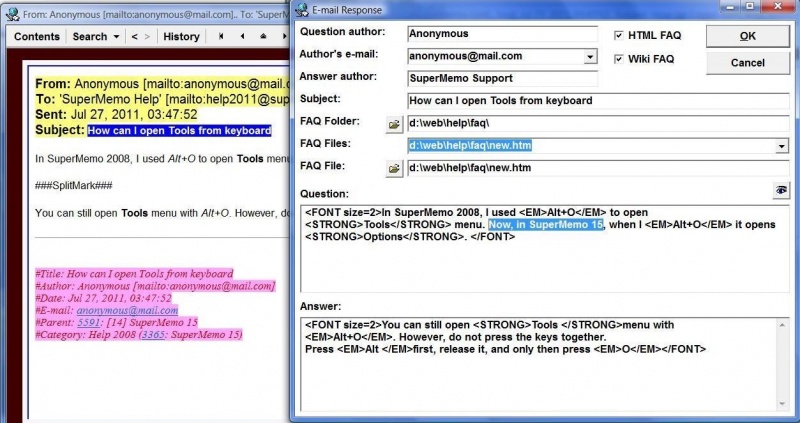Collect information
SuperMemo makes it possible to learn knowledge represented as text, pictures, sounds, video, HTML and more:
Forget about forgetting!
SuperMemo increases the speed of learning by using spaced repetition (see: What is SuperMemo?). It also increases the speed of collecting and formulating knowledge with the help of incremental reading. Incremental reading makes it possible to read literally thousands of articles without getting lost! You import articles from the web (e.g. Wikipedia) and convert them into manageable portions of knowledge:
Read and remember
You can then easily convert imported articles to simple questions-and-answers that ensure that you do not forget what you have learned:
Learn in context
For easy context recovery, source tracking and building a list of citations (author, date, journal, etc.), you can use reference labeling (pink text in the picture).
View thousands of videos in parallel
SuperMemo also makes it possible to watch thousands of videos at the same time without getting lost! It enables you to process individual videos (imported from YouTube) in small portions with a view to long-term retention:
Visual learning
Download images dialog box available from the HTML component menu makes it possible for you to quickly get images embedded in local pages imported from the net and put them to the image registry (in the picture: The Year 2008 in Photographs from Boston.com):
In the same way as you split long articles into manageable extracts, which, in turn, are further converted to cloze deletions, you can also extract interesting details of very large pictures. The original picture can be retained (zooming) or discarded (extracting). In the picture, several portions of the panorama of Freiburg have been extracted into separate elements (extracts are marked on the original picture in yellow-red):
Organize knowledge
SuperMemo helps you organize all your knowledge into a knowledge tree for easy access and review:
Search your knowledge base
You can easily locate individual pieces of knowledge by means of AND-search, OR-search, and NOT-search. In the picture: Search : Find elements (Ctrl+F) is used to find all elements that contain the word Alzheimer but which may also feature (but do not have to) one of the following texts: ApoE, PS1, Presenilin (the search definition is saved as AD Search):
SuperMemo 15 has been rewritten entirely to fully support Unicode, incl. fast low-level search routines:
Web as the source of knowledge
To quickly import a large number of texts from the Internet you can make SuperMemo communicate directly with the Internet Explorer. You can import literal texts, live texts (i.e. texts that change when the external website is updated), hyperlinks or lists of hyperlinks:
Browse your knowledge base
SuperMemo browser makes it possible to quickly review elements and their parameters:
Element filter helps you find material selected by difficulty, priority, number of reviews, etc:
Catalog pictures, sounds, articles, videos, references, etc.
Registries make it easy to reuse and search for multimedia objects, texts, fonts, HTML files, video, etc. The picture below shows an example of an image registry:
Category registry makes it easy to keep a large number of knowledge categories. These can be used to keep different subjects separate and to give all elements in a category a given look and priority:
References are kept in a dedicated registry while their individual text fields (e.g. title, author, date, source, etc.) are stored in the text registry, and thus are available for global text searches:
Learning statistics
Learning statistics will help you supervise and understand the learning process:
Each element has its own set of learning statistics that influence its place in the learning process:
User's forgetting rate and other memory characteristics can be inspected using statistical Analysis tools:
A cumulative forgetting curve can also be displayed using all repetitions data from a single collection:
Your learning progress can be visualized by means of Analysis : Use statistics. For example, the picture below shows the reading workload in Incremental reading (one degree of smoothing):
SuperMemo clearly demonstrates your processing capacity for high priority material on individual days. For example, the picture below shows worst misses amongst most important topics to review:
Element parameters make it possible to quickly change the priority of elements, their category, template, etc.
In SuperMemo, you decide how much of you material you want to remember (95% by default). Even though this means that you will forget some 10% of your items at repetition time, a vast majority will still never be forgotten within your lifespan (see an example statistic of forgotten elements below). With SuperMemo, your investment in learning is safe:
Learning Calendar
The calendar of repetitions makes it possible to see how much work is scheduled for individual days of the learning process. It also provides the record of past repetitions, newly memorized items, retention, and consolidation. If you double-click a day, you will see the list of elements scheduled for repetition on that day (in the future), or the list of elements reviewed on that day (in the past):
The calendar of repetitions makes it also possible to see the number of repetitions scheduled for particular months and years, as well as past repetitions, new items, retention data, etc.
Learning overload
A break in learning can be handled with Mercy rescheduling:
Rescheduling your learning process after a vacation break can be done using various criteria. You can start from top priority material or can opt for easiest material to be reviewed first:
Learning history
You can inspect the history of your repetitions for individual elements:
Managing sleep and learning
If you log your sleep data with SuperMemo, you will be able to visually inspect how sleep affects learning. For example, the picture below shows how grades decrease during the waking day:
Time management
Tasklists help you organize to-do lists. Not only related to learning. SuperMemo development itself is guided by an ever-growing tasklist:
Options
Learning options make it possible to define the speed of learning, time when your 'memory day' ends (i.e. time you go to sleep), etc.
You can change the way you use the mouse with mouse options:
Language options will help you adapt SuperMemo collections to local language needs:
Help
Question of the Day will help you become familiar with the basics of SuperMemo:
Other functions
Floating toolbars make it easy to access many functions of the program with a single click:
SuperMemo will assist you in quickly tiling components in your elements:
SuperMemo supports OLE. This means that you can include your MS Word files or your MS Excel files in your collection. The picture below presents an exemplary mind map imported via OLE from Mind Manager. This mind map can be edited in SuperMemo if you have Mind Manager installed (courtesy of John England, TeamLink Australia Pty Ltd):
If you have a server application installed, OLE component will allow you to edit the file in the native application without leaving SuperMemo via OLE in-place activation. The picture below presents how an Excel spreadsheet is being edited from inside SuperMemo (notice the standard Excel toolbars below the element toolbar):
SuperMemo supports HTML. You can even put an entire website into a single element in your collection.
Leech Alert Wizard and Leech Catcher make it easy to quickly find bottlenecks in the learning process (see: Leeches in SuperMemo):
When using incremental reading to process e-mail, you can use the selected text as a question in an FAQ. The FAQ will be sent as a reply, and stored in FAQ files (as HTML and/or Wiki):




